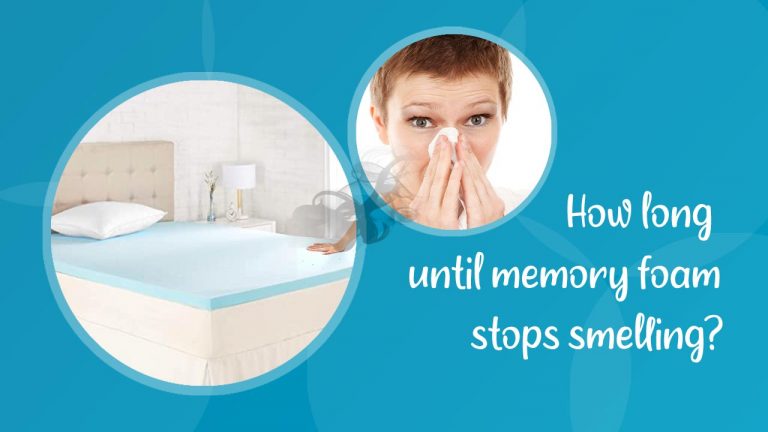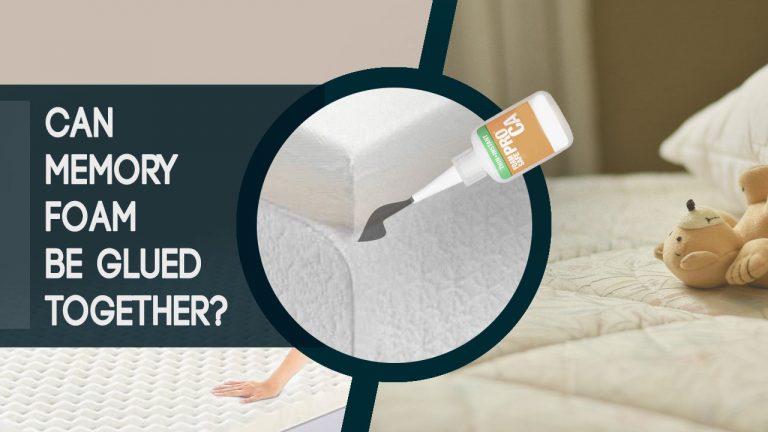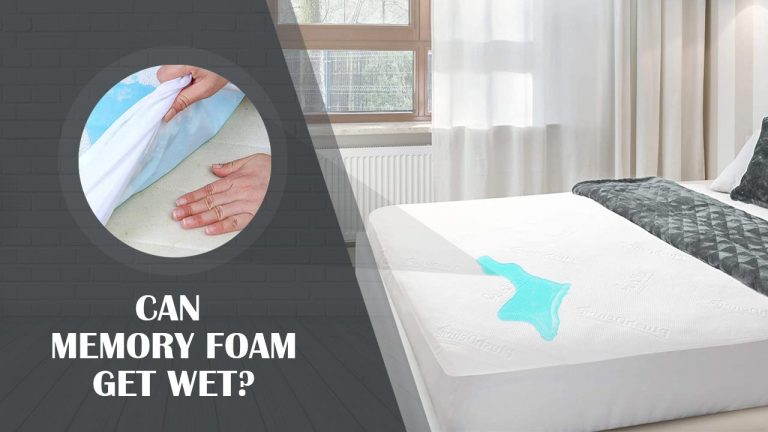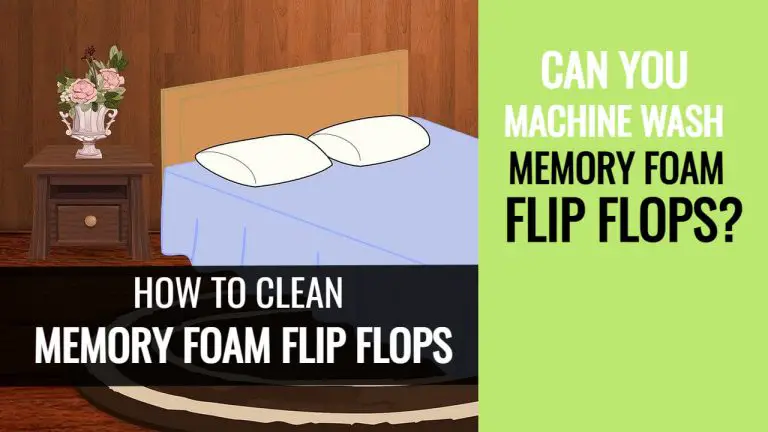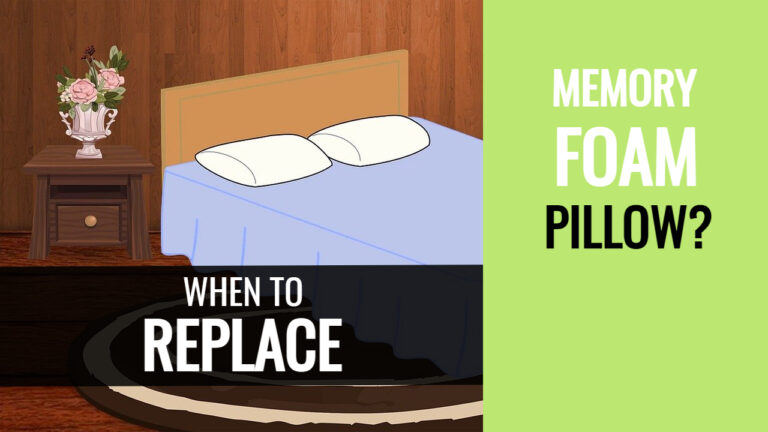Memory Foam – A Complete Guide [ What is Memory Foam, Types & How it Works]
When we think about designing or reconstructing our bedroom, the things that come first to our mind are coziness, comfortability, and usability. The essential aspect corners down to the selection of bed and the mattress.
Different Types of Mattresses are based on the material used in them, such as polyester batting, latex, foam, cotton, flame retardants, etc. Among all, memory foam is one of the most popular mattress materials.
What is Memory Foam?
Memory foam is much denser and firmer than regular foam. Originally designed for NASA, Memory foam is a soft, shapeable material used for mattress toppers, mattresses, and pillows. Made out of viscoelastic polyurethane foam, it’s a cushiony material that is highly responsive.
Memory foam contains bubbles or cells. Memory foam conforms to the body shape and offers a distinct feel in pressure relief while distributing body weight evenly. It quickly absorbs pressure and movement.
As one lay on it, the body heat and pressure of that individual cause the foam to conform to his/her body’s shape while keeping weight uniformly distributed.
This unique feature of Memory foam’s material makes it so comfortable and easing. You’re less prone to pressure points, thereby preventing all pain or other discomforts faced during sleep. Once the person gets a rise out of it, the material returns to its typical structure.
When Was Memory Foam Invented?
The viscoelastic foam was initially being Invented in the mid-1960s for NASA airplane seats. This highly energy absorbent and soft viscoelastic memory foam was not only comfortable, but its use in padded seatbelts and harnesses protected the astronauts against impacts and turbulence. As soon as it was developed and used by NASA, the memory foam entered into different areas.
Some businesses realized the potential for this material, from cushioning in helmets and shoes to being used for prosthetics and various other disability products (wheelchair, hospital settings). It was first commercialized in the US in 1992, bringing a revolution in the bedding/furnishing industry.
Presently, its abundant usage in pillows, mattress pads, and mattresses, with different densities and depths, had made it the most sought-after material.
What is memory foam made of?
Memory foam, also called viscoelastic polyurethane foam, combines some chemicals compounds and additives to polyurethane polymer. When added to the polymer, the compounds increase their elasticity and density, and that factor allows the foam to contour to your body. It’s also called low- resilience foam. Let’s understand the terminology in simpler terms:
Memory foam is Viscoelastic. The term combines two concepts: viscosity and elasticity. The latter refers to the characteristics of the material that hesitantly moves slowly when pressure is applied, like in the case of Honey.
On the other hand, the Elasticity of a material refers to the ability to stretch but coming back to its original form when weight is withdrawn. Thus when the two properties combine in the material, it has the capability to contours to the shape of your body, embraces your curves, and makes you feel cozy and comfortable.
What are the Different Types of Memory Foam?
Memory foam can be classified into three major categories.
1. Traditional Memory Foam
The name is suggestive. It is original memory foam to enter the market for commercial use. The classic memory foam is engineered to mold to the contours of your body and is constructed in a way that envelops you in a hug.
The only drawback with the traditional memory foam is its capacity to retain heat. The sleeping mattress becomes uncomfortably warm. People complain about feeling “sleeping hot.” The reason forced companies to invent and modify the foam to nullify this drawback.
2. Open-Cell Memory Foam
This type of basic memory foam is constructed with a different internal structure but using the same standard ingredients as traditional memory foam. Open-cell memory foam has internal pockets and is used on the sleeping surface.
This open-cell feature allows airflow and ventilation that helps disperse heat. To combat the drawback of the traditional variant, the open-cell foam helps people stay cool. But it has its downsides too.
The sleeping surface of the bed is less dense, which reduces the firmness and durability of the material. Nevertheless, advanced manufacture technologies used by some brands had overcome this issue.
3. Gel Memory Foam
Another type of is the gel-infused memory foam. Here the gel memory foam is made by pumping gel-based microbeads into the foam. There are two types of gel microbeads used in the material.
First is the heat-absorbing gel, and the other is phase changing. The former microbeads create pockets for making the surface calm, whereas the latter vigorously absorb and release heat from your body. These gels have natural cooling properties and upsurge the density of the mattress.
Apart from Gel, several other cooling additives are being used by companies, such as copper (highly conductive in heat-dispersal), layers of corrugated foam, and aromatherapy scents.
In addition to the above, one can find some innovative memory foam such as eco-friendly foams. Known as “greener memory foams” or “plant-based foams,” this type of memory foam material is constructed using more plant-based chemical compounds (like soy or castor oil), replacing some of the petroleum-based compounds used in typical memory foam.
They offer more breathability and are a bit cooler. A plant foam is a little more responsive and adjusts more quickly as you change positions. These are still in the developing stage, nonetheless are gaining popularity.
Gel-infused memory foam mattresses are ideal for garden rooms because they stay cooler in warm conditions and offer better airflow, making them perfect for spaces with varying temperatures. They also help prevent heat buildup, ensuring a more comfortable sleep environment year-round.
How Does Memory Foam Work?
As discussed earlier, the most outstanding feature of memory foam material is its ability to molds (viscoelasticity). When exposed to pressure, it becomes soft and contours to the body by evenly distributing body weight.
Its resilience return to its standard shape once pressure is removed and weight is removed. It happens due to the reaction of polyurethane reacts to body heat.
Memory foam works according to the applied force and pressure. For example, if the applied pressure is too quick, slower the foam changes its shape.
Thus it can be inferred that the more forceful the impact is, the more tremendously the memory foam will absorb the pressure. This was the reason why NASA used it in areas like space aircraft construction.
The foam is temperature-sensitive, which means the viscosity decreases with temperature. It will sink in more as and when your body warms up. It will thus become more flexible and less stiff. So the reason one feels the mattress to be softer and more pliable after some time of dozing off.
It should be noted that Memory foam returns to its original shape when force is removed–but the process is relatively slow. It typically takes 5-10 seconds to flex back to normalcy.
During this significant lag, energy is dissipated, and you will not get all your energy back. This phenomenon is called “hysteresis” and is commonly found in the functioning of bicycles and car tires.
Therefore, we can say that any viscoelastic material works on these properties:
- They are force-dependent.
- If applying a constant force, the material stretches continuously
- The material works on the phenomenon of hysteresis
Best Uses of Memory Foam
The comfy memory foam material was initially developed to add comfort and backing. But then its features of conforming to the body curves and heat retaining properties has made it to be used in various domestic uses.
- It feels excellent in bedding utilities such as mattresses, blankets, and pillows,
- It has medical uses, such as hospital bed pillows, wheelchair seat cushions, and padding for patients with postural problems. A cervical pillow made from this material eases chronic neck pain. The added warmth due to its heat-retaining ability decrease the pain.
- It has been used to make plush bath mats.People find it suitable for foot pampering.
- Memory foam is cropping up in your gadgets and their accessories. Examples-electronics cases made with foam layering provide additional protection, headphones, in bag straps for added shoulder and back comfort.
- One might find the foam in their closet –shoes, and lingerie. Many brands like Nike and sketchers add memory foam to insoles for pressure relief.
Advantages of using Memory foam
1. Provides comfort Body Fit
The visco-elastic material contours your curves in a natural way. One gets an ideal firmness level which one struggles to get in a traditional mattress. Memory foam takes the pressure off from your heavier and denser body parts.
The comfort factor has made it so popular. Furthermore, the material is flexible enough to get adjusted to any base so as to contour to different positions without getting worn out.
2. Provides Pressure Point Relief (Pain-Relief)
Memory foam relieves painful pressure points due to its moldability. This factor generated its usage in hospitals and other medical needs to provide significant pressure relief to sensitive areas.
People with orthopedic diseases (arthritis and fibromyalgia), sleep disorders, and chronic respiratory problems benefit from this material while lying down as it eases breathing during sleep. It helps patients sleep more comfortably, reduces bedsores’ occurrence, and reduces pressure on the spine, chronic back and neck pain.
3. Less prone to allergy
The components of memory foam are such that it hinders and restricts the entry of mold, pollen, dust, and pet dander to hide in this dense material. Thus it’s suitable for people who are prone to allergies.
The absence of components like wool, feathers, etc., makes it allergic-free. Again memory foam has a low build-up of moisture. If properly vacuumed, then results are very safest in terms of hygiene. It promotes good health and is hypoallergenic.
4. Low maintenance
With regular mattresses, one has to deal with flipping and rotating the beds now and then. But asMemory foam doesn’t sag or get lumpy, there is very little need to carry out the processes described above.
No requirement of turning and flipping as there is no sagging. Moreover, mattresses build with memory foam are highly durable (warranty with anything between 10 and 25 years). Hence it stays clean, low upkeep, and comfortable material.
5. Promote proper body alignment
There is no sagging of this material, andas we know, it evenly distributes the body weight across your sleep surface, conforming to your body’s natural curves. Thus the body acquires a natural alignment, which encourages spine, back, and lumbar support.
6. No motion transfer
Many of us shift our sleeping positions many times during the night, which can be disturbing for others on the same bed. The density of Memory foam has the capability to absorbs motion. So it’s quiet and neither squeaks nor creaks.
Hence it is perfect for people who sleep with a restless partner to benefit the most from the sleeping surface made out of Memory foam because it is motion transfer resistant.
7. Ideal for every sleeping position
Memory foam is a perfect fit for all kinds of sleepers like stomach, back, or side sleepers. This is due to its temperature-sensitive and moldable properties; it can support every part of your body.
Disadvantages of Memory Foam
- As memory foam has a heat-retaining feature, it could make people uncomfortable in warm weather.
- Memory foam can produce an odd odor (chemical-like smell called off-gassing). This problem can be solved if the products like mattresses and pillows are adequately aired before using them.
- Memory foam products can be pretty heavy. The denser the foam, the more serious is the bedding.
- This problem occurs when they haven’t been appropriately aired.
- The price of memory foam products is high and may put many people off.
Why is memory foam so expensive?
Memory foam is comfortable as well as durable. One may find the pricing on the higher side in comparison to other bedding material. The high price can be justified for the following reasons:
- The quality control standards are very high. To test and manufacturer the material (without harmful chemicals and less odor) in place with Strict state regulations, consumes time, money, and effort. Again to gain correct firmness for the end-user is what high-quality maintenance is all about.
- It is Long lasting. Even the medium density memory foam lasts about 7-9 years. The built material doesn’t lose its firmness for a long time. Thus more durable the material, high will be its price.
- The unique feature that a memory foam possesses makes it a premium product. The body weight is distributed evenly on the surface and there is no motion transfer while turning and tossing during sleep. The amazing aspect of its contouring to your body shape gives you a different sleeping experience in comparison to traditional coil/spring mattresses.
- Memory foam has several health benefits. It is hypoallergic and helps in pressure point relief. It’s mostly recommended to nullify sleeping discomfort. Again this material helps to cure back and spine ailments. In order to feel better people don’t hesitate to buy a premium-priced product.
- New technology in memory foam has made it slightly more breathable and can maintain body temperature. Adopting newer technology by manufacturers bears a cost burden and thereby it makes the product more expensive.
- Memory foam is also expensive because of its shipping charges. As the material is denser than traditional products, it is on the heavyweight side. The transportation cost thus affects the pricing of the material.
What is the difference between Pure Foam and Memory Foam?
Pure Foam or polyurethane foam is mainly made from petrochemical compounds, is less expensive than memory foam. On the other hand, Memory foam is a variation of poly-foam where is processed with chemicals that help it retort to pressure and heat.
This processing adds to the viscosity property in memory foam, and hence it can contour much closer to the shape of your body than pure poly-foam. Let’s understand the difference in terms of
Structure: The cell structure in pure foam is less dense than those find in memory foam. The number of tiny spring beads carries a high density that gives more responsiveness when high force is applied.
Comfort: As a popular choice for mattresses, memory foam is more popular than pure foam. It is more comfortable and cozy to sleep in. they conform much closer to your curves and inherently support your body alignment. Again memory foam is a sturdy and durable material in comparison to pure foam.
The cost: The price tag is a vital issue when comparing two products. Memory foam is quite expensive but ensures high quality and safe for your health. At the same time, pure foam is reasonably cheaper due to its features.
FAQS
Q. Is memory foam terrible for your back?
Back pain is caused when the sleeping surface is not firm. Memory foam is firm and flexible enough to contour the inner and outer curves of your spine. So if you are a back sleeper, then you can surely opt for memory foam mattresses.
Memory foam can be perfect to provides pressure relief while staying supportive. This feature is often recommended for back pain.
Q. Are Memory Foam Products Safe for Children?
Experts suggest that soft material should be less used for infant products because soft bedding traps carbon dioxide. There are reports of increased risk of sudden infant death syndrome (SIDS).
As far as memory foam is concerned, gel-based memory foam is suitable for kids aged above 4yrears. Again buying products with certi PUR-US certification is recommended.
Generally, Memory foam is considered safe and non-toxic for everyone. However, small kids-infants and toddlers may be more sensitive to the chemicals used to make and treat the material. They might experience allergies, breathing difficulty, asthma, headaches, coughing, or nausea.
Q. How to decide whether memory foam is the Right Material for me?
Memory foam can be the right choice for you if
- You are curvier.
- You Sleep too cold
- You are a Back or side sleeper
But Avoid memory foam if
- You sweat when you Sleep
- Youprefer to sleep on your belly.
Q. Is memory foam material waterproof?
No, Memory foam is not water-friendly. It is not advisable to wash your memory foam-infused products like shoes, pillows, and mattresses. Instead, go for a waterproof protector shield from getting stains or spillage.
The moisture/water will destroy the open cell structure/microbeads of the material, but it will further damage and bring down its quality and density. Once affected by moisture or water, it may not come back to its original shape.
Q. How is memory foam density measured?
The density of memory foam is measured by dividing the weight of the material by its length, width, and height. It is measured in cubic feet and ranges from 1.5 to 8.
A Low-density memory foam weighs 3 pounds or 1.5 cubic feet. These foams are low priced and last about six years.
A Medium-density memory foam weighs 4 – 5 pounds per cubic foot. They are better at providing pressure and pain relief than low-density memory foam and last about seven years.
A High-density memory foam weighs more than 5 pounds per cubic foot. It provides the best comfortability, motion separation, back pain relief and lasts about 8 -10 years.
Final Words:
From the above discussion, it must be concluded that memory foam is a processed material known for its usage in mattresses, sofas, and other furnishings. It has properties like heat-retaining, pressure-relief, and viscosity to justify its functionality. The comfort is top-notch, and their longevity is high than pure foam.
Memory foam is soft and has a cushy surface, and can sink with the pressure exerted. Its durability and molding aspect has made it a popular choice when countering joint pains and sleeping discomfort. Ideal for all sleep positions and sleep styles, it is a good choice for a mattress. Although its cost is high given its capacities and benefits, one should not mind spending.

